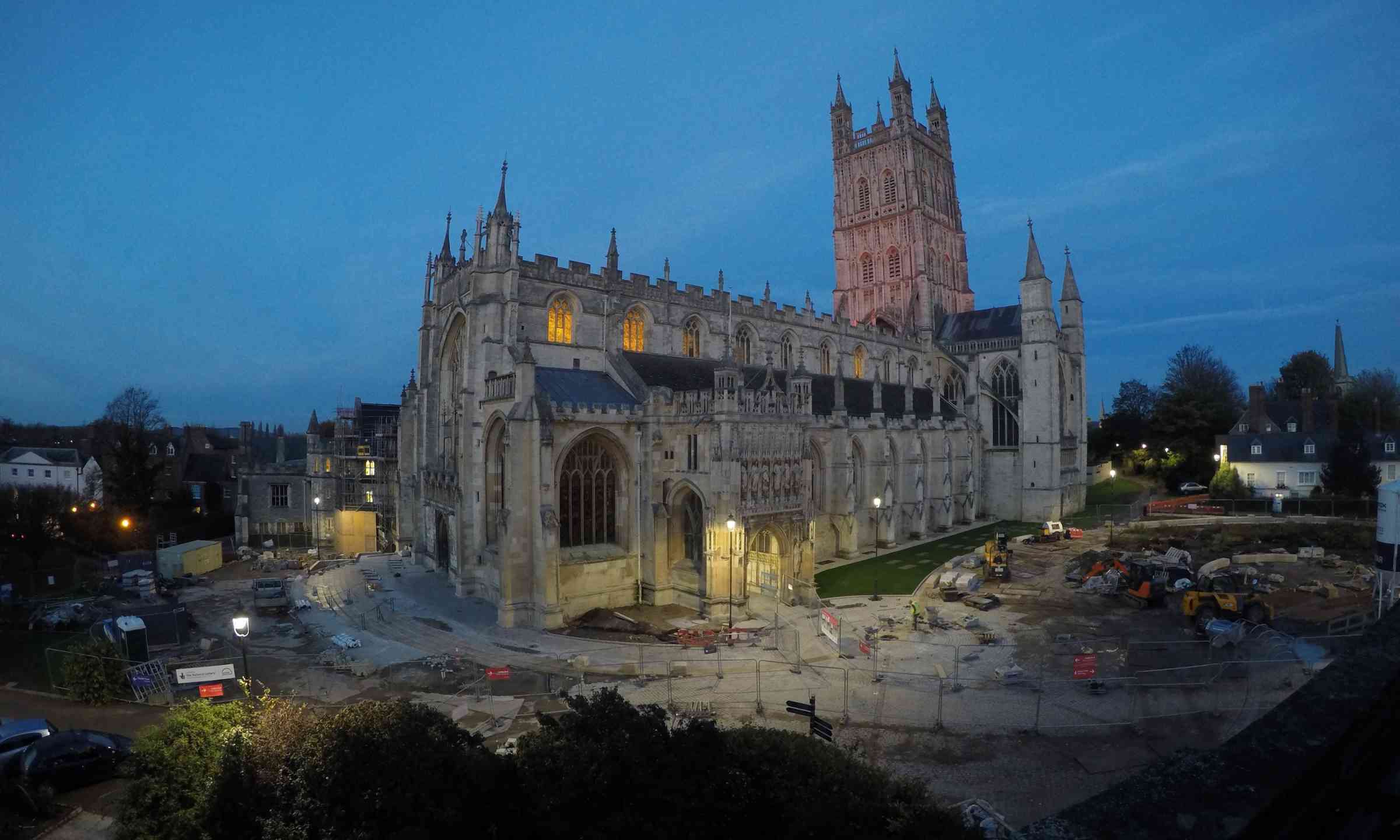I’d like to make a confession: despite being a heritage geek, lover of churches and Gloucester Cathedral’s “Number One Fan”, I sometimes find myself wishing that this extraordinary building … wasn’t quite so extraordinary.
Shocking I know – and I apologise if you think less of me for it… Yet I have a sneaking suspicion that readers who’ve been involved in looking after heritage buildings may just appreciate where I’m coming from. As proud custodians of these beautiful buildings, it is our duty to pass them on to the next generation in better condition than we found them. In practice, hundreds (and sometimes thousands) of years away from the moment at which these buildings were first created, it’s an ambition which is increasingly complex and challenging.
Part of my job as Head of Development is to help turn Gloucester Cathedral’s never-ending maintenance “to do list” into a co-ordinated programme of fundable projects; plus finding the money of course! In the past eight years we have fixed three roofs, restored the medieval Lady Chapel, conserved the South Aisle, landscaped College Green, improved access across the site, updated heating systems, added solar panels, repaired the war memorial, installed new stained-glass windows… I think you get the picture. With buildings such as ours, the scale of individual projects is as great as the number of outstanding tasks.
Heritage buildings are extremely high maintenance and looking after them can be utterly overwhelming. But if there is one thing I have learnt and which I cling to in the face of this on-going challenge, it’s that proper preparation will always put you in the best position to succeed. And since the other key thing all of us involved in managing heritage buildings soon find out is that someone has always already gone through the pain you’re now living through, it’s only right that I share my hard earned, top five tips for managing project workload.
Have a vision
If a heritage building (or any other building) is to thrive, it needs a purpose. Introducing an organisational vision will enable you to develop clear aims to help with decision-making and project development. At Gloucester Cathedral our vision is to be ‘in tune with Heaven, in touch with daily life’ and one of our strategic priorities is to enable as wide an audience as possible to access the building. It was this ambition which compelled us to improve physical access across the site – and which continues to inform how we think about every aspect of life within the Cathedral.
The other great thing about having a clear vision is that it makes it easier to talk to other people, inspiring confidence in existing supporters…and new ones. A vision gives direction and gives others a purpose to get behind.
Plan ahead… well ahead!
A clear vision means that it is the organisation driving projects and not the other way around. Hands up those of us who’ve found ourselves in the position where a project has started but no one quite knows how; or where a small-scale repair became a full-blown refurbishment? It isn’t pretty but by having a Vision – and by planning ahead to deliver that vision – it is avoidable.
Resources like a Quinquennial Report or a Conservation Management Plan can help you prevent projects sneaking up on you or becoming unwieldy. At the Cathedral, we have a document called the ‘Project Priorities Pipeline’ (actually it’s more often referred to as the ‘PPP’ because we love an acronym!) which sets out every possible project for the next 10 years. Each project has basic (essential) supporting information on fabric need, scope, timescales, indicative costs – and whose approval is needed to start work. It’s just a simple table but a small team of us review it three times a year to make sure we stay on track and prioritise. Speaking of which…
Prioritise
I don’t know a single church or cathedral that doesn’t have more projects than resources, funding or time. And very few of us started our relationship with churches because we were interested in building! It’s important to have structures in place which enable the organisation to prioritise projects based on factors such as need and opportunity. Your vision and project plan are two key tools, and this is definitely one where conversations (sometimes hard ones) are needed to get to a clear agreement on what is going to be taken forward – and what is just going to have to wait.
Prepare thoroughly
How long will the project take? How much will it cost? What statutory permissions do you need? Who is going to lead and deliver it? What will the impact be? Where is the funding coming from?
The key is to ask these questions as early as possible while giving yourself enough time to answer them with confidence – this reduces risk and provides parameters within which to work. How can you stay on track (on time and on budget) if you haven’t marked out the course first? With buildings such as ours, it’s inevitable that you’ll go off track somewhere, but as long as you know where you’re meant to be, you can help find your way back without risking calamity.
Share progress and celebrate success
Finally, it’s worth remembering and recognising that we really are privileged to work with buildings such as these. Never underestimate the level of interest there will be in the building and the work and factor clear communication into your project from the start. At the Cathedral we run two Twitter accounts alongside the website, as well as Facebook and Instagram. We share news with our visitors via ‘Work in Progress’ information and by ensuring our volunteers are well briefed. We take countless photos and issue press releases. We write to all of our funders and supporters to let them know what’s going on. We’ve even had TV and film crews in, sharing our journey and our successes far and wide.
Projects can take a long time to finish and we all need motivation along the way so it’s worth celebrating even the smallest of milestones and victories.
Being a custodian of a heritage building is far from easy but by walking in the footsteps of those who have come before us, we have the benefit of their lessons, wisdom and example. You are in the best of company and should be proud of the work you do to contribute to our nation’s built and spiritual heritage.
Right then, I’m off to launch another ‘sponsor a stone’ campaign, but if you ever feel like sharing your frustrations, triumphs or simply talking shop, feel free to get in touch…



